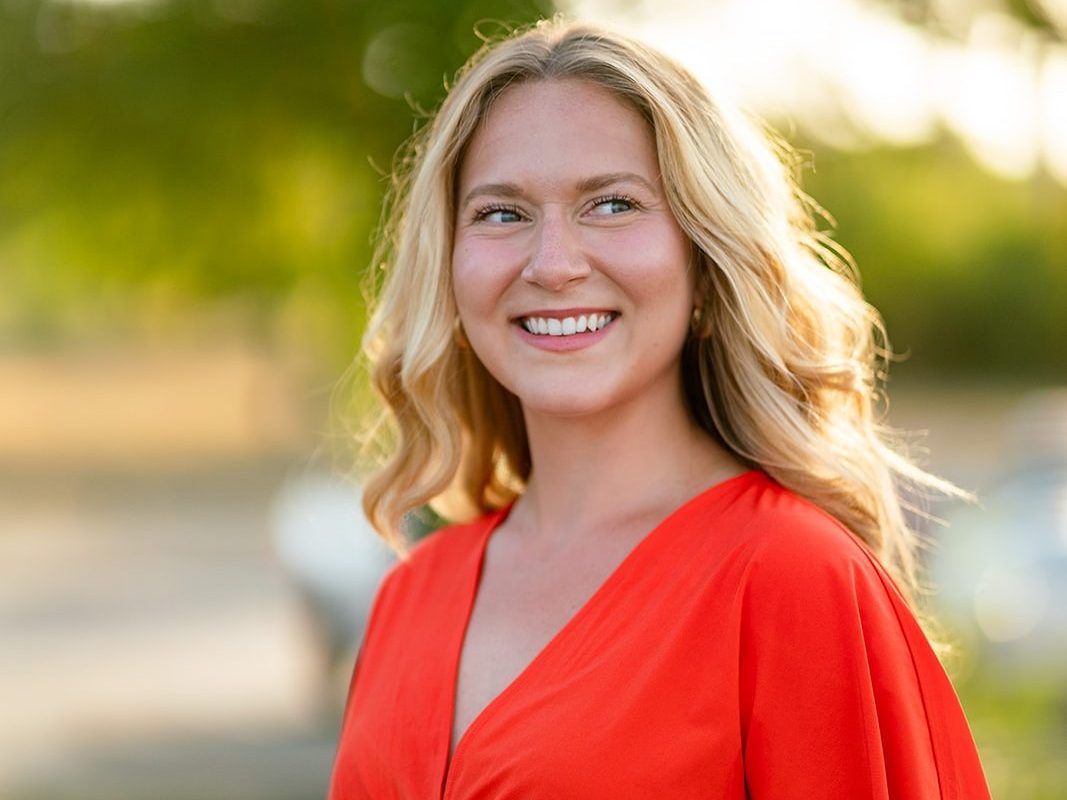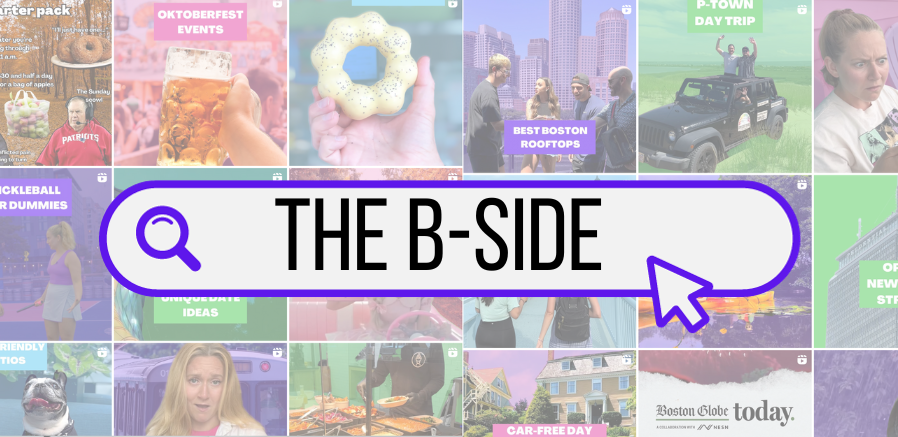‘Reeling’ in your audience: Emily Schario discusses The B-Side’s social media strategy
The B-Side, Boston Globe Media’s witty daily newsletter covering local news, has been reeling in readers with an engaging social media presence on Instagram and TikTok. The B-Side is led by Emily Schario, head of content and lead writer.
The “Daily Dose of News” newsletter launched in Oct. 2022 and has since gained quite a following. As of Dec. 2023, The B-Side TikTok account holds approximately 28,000 followers while the Instagram account has 34,000. Their content is short, informational and — most of all — entertaining. Both the social accounts focus on video media curated for a young audience in greater Boston.
Storybench spoke with Schario to discuss The B-Side’s social media presence and strategy and the importance of producing news content for a young, local audience.
The following interview has been edited for clarity and length.
How did you realize that The B-Side’s social media presence was going to be important?
Schario: A part of our mission of the site is speaking to a younger audience. We would be kind of foolish to do that if we didn’t consider social in the picture. It’s where most millennials and Gen Z are getting news and information. So, if anything, even though I would say the newsletter’s our core product, the social component is just as important to us because that’s really –– I hate using this line of “meeting people where they are” –– literally meeting people where they are.

What is your social media strategy?
I would say the three buckets that our social content falls into are trending sounds, some kind of like scripted feature video –– whether that is covering one specific topic and doing a news explainer, like a focus on “things to do,” or a roundup or something like that. We decided that mostly from what we’re seeing online. People are consuming content made by influencers and creators, it’s clearly successful. But the reality is, depending on who you’re talking to, an influencer may not have the kind of authority that a journalist or promotional video does, and they don’t hold their content to as high of an editorial standard or something like that. It’s striking this fine balance of having personality-driven content that also has real, legitimate and trustworthy information.
Listen to more of Schario’s tips!
Do you feel like Instagram Reels and TikToks have been the most appreciated among your audience?
Yeah, I think it’s a little bit of both. We’ve been throwing stuff at the wall and seeing what sticks. And we have a pretty clear idea of what sticks now. I think the things that do well are a mixture of timeliness and obviously the quality of the production. So, one of the first videos that really blew up for us was a foodie’s guide to the Seaport holiday market, and that worked really well because it was a very specific angle on this market that every other reporter was covering. It also just opened too, so there was this degree of novelty and freshness that we were able just to slam ourselves into the algorithm pretty quickly, so when [people] start looking up “things to do in Boston” or “Snowport Boston,” our video pops up.
What’s your creation process for an Instagram Reel or a TikTok?
There’s certain evergreen content that you can always lean into. In Boston specifically, the weather and the [MBTA] are always going to have problems, it’s an easy thing to lean into. The reality is our audience wants news and information, but they also want to be entertained and they also want to be able to save a video of something to do or see.
The B-Side really focuses on the Boston community. Can you tell me more about that?
The idea for [The] B-Side came about because there are a lot of local news deserts. Local papers are closing. Coming off of [COVID-19], there’s a lot of “I want to connect with my community again,” or “How do I feel connected to my community?” I think the reason The B-Side works and feels relatable and authentic is because it’s written by someone who lives here. My experience as someone who is, I would say, a Massachusetts transplant, who came here for school and stayed, that is a very universal experience for a huge swath of young people living here, just given the sheer amount of colleges and universities in the area.
Why was it important for you to create social content that resonated with young people?
Part of the reason why I always want to prioritize entertainment, joy and humor in our social content is because it’s almost a gateway to reading a news article. Maybe you have the bandwidth or the attention span to watch a 32 seconds [or] 60 seconds video that is about a news topic, but now you’re like, “Oh, I’m learning about this thing on the T that wasn’t painful or confusing. Maybe I do want to read more about that, maybe I really do want to click this link.” For some people, it’s just going to stop at that interaction. But for others, it could be a gateway to reading the newsletter. It could be a gateway to reading that 1 to 2000 word article. The stuff on social [media], I think, is almost like the breadcrumbs to the newsletter.





